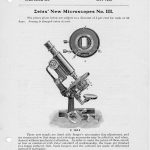
I have met with several federal science library groups in recent weeks and among other things felt a great sense of relief on discovering that most of them face the same issues in managing digital content as we do at the Smithsonian Libraries.
On April 26th, I traveled to Hampton, VA to visit a group of NASA librarians who meet annually at a different site each year. This year the meeting was held at the Langley Air Force Base whose library staff had contacted me in January with technical questions regarding their DSpace digital repository. They expressed a further interest in Smithsonian digital library efforts and invited me to come to their annual meeting.
Librarians from NASA sites across the country, including the Johnson and Kennedy Space centers in Houston, TX and Cape Canaveral, FL, came to Hampton for three days of meetings. And although I attended only one afternoon, I learned a good deal about their activities, including many common issues faced by these science centers and the Smithsonian. For example, several NASA sites have large digitization projects in the planning and/or production stages, including conversion of images and video to digital formats. And although these facilities might lack the public mandate that the Smithsonian has, we both face the same sorts of issues regarding the management of this digital material.
The following week I attended the monthly CENDI meeting which includes the science and technology information managers from federal agencies in the DC metro area. This typically includes representatives from the U.S. Geological Service (USGS), National Agricultural Library (NAL) and the National Library of Medicine among others. This month’s meeting was held at the NAL and included a presentation on solutions to the problem of Big Data. A representative from Networking and Information Technology Research and Development (NITRD) presented some interesting alternatives to managing this growing need. Among them were developing challenges to outside bodies (public and private) to crowdsource for solutions to the problems that the explosion of scientific data presents. Workforce development, including training programs for research librarians is another area of activity by this organization.
The final presentation at the monthly CENDI meeting was a description of the implementation of VIVO at the NAL. VIVO is a sort of research registry, collecting and linking data on what NAL director, Simon Y. Liu described as the 3 Ps: People, Projects and Publications. This is a popular platform for knowledge management and one that the Smithsonian Libraries may eventually investigate.

One Comment
Thank you for this report, Alvin. Your experience mirrors what I was hearing at the Future of Science Libraries invitational conference in Cold Spring Harbor earlier this year. ARL has an eScience initiative that I’m thinking we should begin to get involved with also. As you say, we’re all facing the same problem and there is some expectation that libraries should step up to the mark to help scientists. It’s a role that would help make us even more indispensable to the Smithsonian, should we take it on.